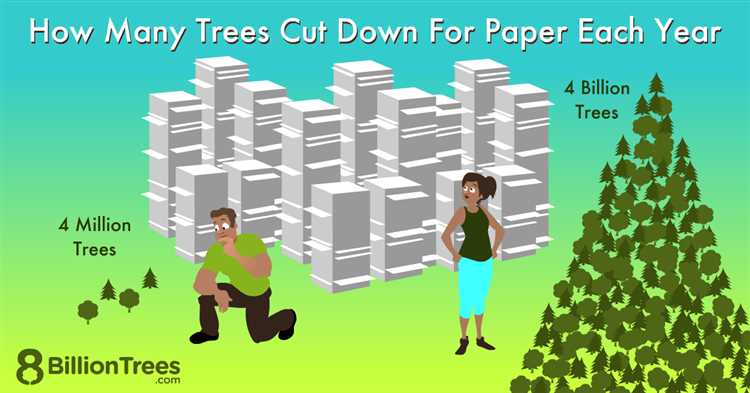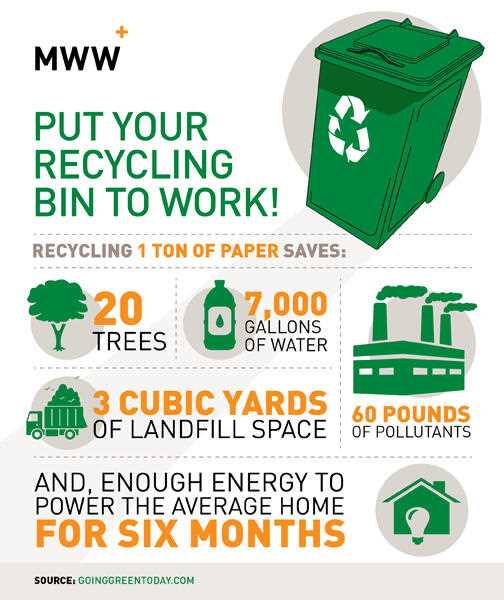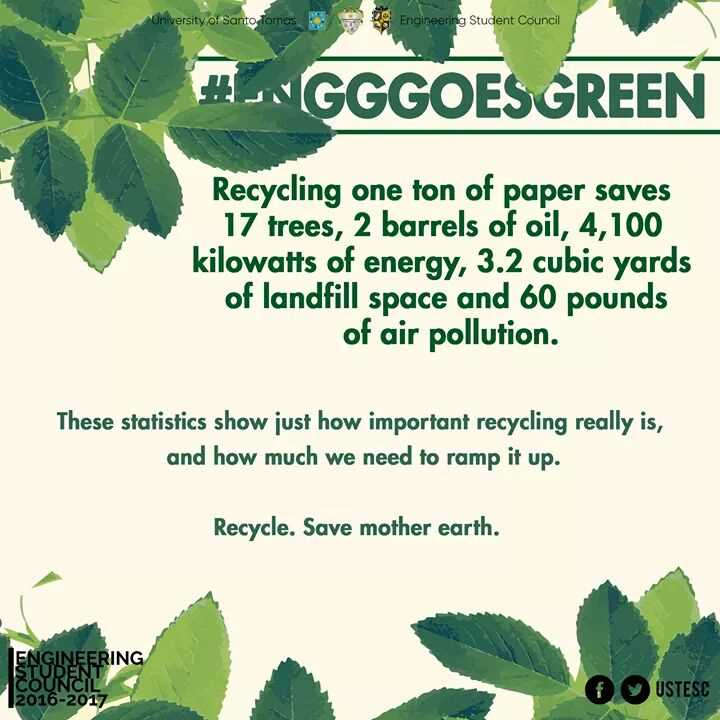
Recycling is a crucial practice that plays a vital role in preserving our natural resources and protecting the environment for future generations. One of the most impactful materials to recycle is paper. By recycling just one ton of paper, we can reap numerous benefits that contribute to the sustainability of our planet.
First and foremost, recycling paper saves trees. Trees are essential for maintaining the balance of our ecosystems and providing us with oxygen. By reusing paper, we can significantly reduce the need for cutting down trees, thus preserving our forests and the habitats they provide for countless species. Additionally, reusing paper reduces the demand for new paper production, which in turn saves water, energy, and chemicals that are used in the manufacturing process.
The environmental benefits of recycling paper extend far beyond tree conservation. The production of paper requires large amounts of water, energy, and chemicals, all of which have a significant impact on the environment. By recycling paper, we can significantly reduce the water and energy consumption required to produce new paper. Furthermore, recycling paper reduces air and water pollution, as the production process releases harmful pollutants into the environment. By recycling one ton of paper, we can save an estimated 17 trees, 7,000 gallons of water, and 380 gallons of oil.
- Preserving Natural Resources and Wildlife
- Reducing Energy Consumption and Greenhouse Gas Emissions
- Energy Consumption Reduction
- Greenhouse Gas Emissions Reduction
- Conserving Water and Protecting Waterways
- Decreasing Landfill Waste and Space
- Environmental Impact
- Community Benefits
- Creating Job Opportunities and Boosting the Economy
- Job Opportunities in the Paper Recycling Industry
- Economic Impact of Paper Recycling
- Promoting Sustainability and a Greener Future
- Supporting the Circular Economy
- Taking Action for a Greener Future
- Q&A:
- How many trees are saved by recycling 1 ton of paper?
- What are the environmental benefits of recycling paper?
- Does recycling paper help in reducing greenhouse gas emissions?
- How does recycling paper help conserve water?
- Why is recycling paper important?
- How many trees can be saved by recycling one ton of paper?
- What are the environmental benefits of recycling one ton of paper?
Preserving Natural Resources and Wildlife
By recycling 1 ton of paper, we can effectively conserve natural resources and protect wildlife habitats. Paper is made from trees, and the production of paper contributes to deforestation, which can have severe environmental consequences. Recycling paper helps to reduce the demand for fresh trees, preserving the natural resources and preventing the destruction of forests.
Forests are not only important for their beauty, but they also play a crucial role in maintaining ecosystems and providing habitats for numerous species of plants and animals. When forests are cut down for paper production, it disrupts the delicate balance of nature and leads to the loss of biodiversity.
By recycling paper, we can help to minimize deforestation and preserve wildlife habitats. When we recycle paper, we reduce the need to harvest trees, which allows forests to remain intact and continue to provide a home for various species. This, in turn, helps to maintain the balance of ecosystems and protect endangered wildlife.
- Recycling 1 ton of paper saves approximately 17 trees. By preserving trees, we can provide homes for birds, mammals, and insects that rely on forests for shelter and food.
- Preserving natural resources also helps to conserve water. The production of paper requires a significant amount of water, and by recycling paper, we can reduce water usage in the manufacturing process.
- Furthermore, recycling paper helps to reduce the release of greenhouse gases and air pollution. The production of paper generates carbon dioxide emissions, which contribute to climate change. By recycling paper, we can reduce the carbon footprint and help mitigate the impact of global warming.
In conclusion, by recycling 1 ton of paper, we can make a positive impact on the environment by preserving natural resources, protecting wildlife habitats, and reducing greenhouse gas emissions. Recycling paper is a simple yet effective way to contribute to the conservation of our planet and ensure a sustainable future for generations to come.
Reducing Energy Consumption and Greenhouse Gas Emissions
Recycling paper not only helps save trees and the environment, but it also plays a crucial role in reducing energy consumption and greenhouse gas emissions. The process of manufacturing paper from virgin materials requires a significant amount of energy, which is primarily sourced from fossil fuels. By recycling one ton of paper, we can drastically reduce the energy consumption associated with paper production.
Energy Consumption Reduction
Producing paper from recycled materials consumes considerably less energy compared to using virgin materials. The recycling process involves collecting used paper, sorting it, and then breaking it down into fibers. This procedure requires significantly less energy compared to the production of paper from raw materials like timber. The energy saved in recycling one ton of paper is equivalent to the energy used to power an average American home for six months.
Greenhouse Gas Emissions Reduction
Energy production from fossil fuels for paper manufacturing contributes to the release of greenhouse gases, primarily carbon dioxide (CO2). The burning of fossil fuels in power plants emits CO2, which is a major contributor to global warming and climate change. By recycling paper, we can significantly reduce the demand for energy produced from fossil fuels, thereby decreasing the associated greenhouse gas emissions. Recycling just one ton of paper can save around 3,000 pounds of CO2 emissions, which is equivalent to offsetting the emissions from driving a car for approximately 2,500 miles.
| Energy and Emissions Reduction from Recycling 1 Ton of Paper | |
|---|---|
| Energy Saved | Enough to power an average American home for six months |
| CO2 Emissions Saved | Equivalent to offsetting the emissions from driving a car for approximately 2,500 miles |
Conserving Water and Protecting Waterways

Recycling paper is not only beneficial for saving trees and the environment, but it also plays a crucial role in conserving water and protecting waterways. The production of paper requires a significant amount of water, both for the growing of trees and the manufacturing process. By recycling one ton of paper, we can save approximately 7,000 gallons of water.
Furthermore, the process of manufacturing paper from virgin materials involves the use of chemicals that can contaminate waterways. These chemicals, such as bleach and dyes, can have harmful effects on aquatic life and ecosystems. However, when paper is recycled, the need for such chemicals is significantly reduced, thereby minimizing the potential for water pollution.
Additionally, recycling paper helps to alleviate the pressure on water sources. With water scarcity becoming a growing concern globally, it is essential to conserve and manage water resources efficiently. By recycling paper, we can reduce the demand for water in the paper production industry, leaving more water available for other uses.
In conclusion, recycling one ton of paper not only saves trees and benefits the environment, but it also plays a crucial role in conserving water and protecting waterways. By reducing water consumption, minimizing water pollution, and alleviating pressure on water sources, recycling paper contributes to the sustainable management of our valuable water resources.
Decreasing Landfill Waste and Space
One of the main benefits of recycling paper is the significant decrease in landfill waste and the conservation of space in landfills. Paper accounts for a large portion of the waste in landfills, and by recycling it, we can reduce the amount of waste that ends up in these facilities.
When paper is thrown into landfills, it takes up a significant amount of space. Landfills are already limited in capacity, and by recycling paper, we can free up more space for other types of waste that cannot be recycled. This is crucial for the long-term sustainability of landfills and the management of waste disposal.
Environmental Impact
By reducing the amount of paper waste in landfills through recycling, we can also minimize the environmental impact associated with landfill operations. When organic materials like paper decompose in landfills, they produce methane gas, a potent greenhouse gas that contributes to climate change.
By recycling one ton of paper, we can save approximately 17 mature trees, which helps to reduce deforestation and preserve natural habitats. Furthermore, recycling paper requires less energy and water compared to making new paper from virgin materials, resulting in lower greenhouse gas emissions and water pollution.
Community Benefits
Recycling paper not only benefits the environment but also the communities around recycling facilities. Recycling paper creates job opportunities and stimulates local economies. It also helps to reduce the strain on natural resources, such as timber and water, by utilizing recycled materials instead of virgin materials.
In conclusion, the act of recycling one ton of paper can have a significant positive impact on decreasing landfill waste and conserving valuable landfill space. By recycling, we can reduce the environmental impact of landfill operations, preserve natural resources, and create economic opportunities within our communities.
Creating Job Opportunities and Boosting the Economy

Recycling 1 ton of paper not only benefits the environment but also creates job opportunities and contributes to boosting the economy. The paper recycling industry is a significant source of employment, providing jobs for thousands of people around the world.
When paper is recycled, it goes through a process that involves collecting, sorting, processing, and manufacturing. Each of these steps requires a workforce to perform various tasks. From the collection and transportation of paper waste to the operation of recycling facilities and the production of recycled paper products, there are numerous job roles available in the paper recycling industry.
Moreover, the demand for recycled paper products continues to grow as more businesses and individuals recognize the importance of sustainability. This increased demand leads to the expansion of recycling facilities and the need for additional staff to meet the production requirements. As a result, more job opportunities are created, and the economy receives a boost.
Job Opportunities in the Paper Recycling Industry
The paper recycling industry offers a wide range of job opportunities for individuals with different skill sets and backgrounds. Some of the common job roles include:
- Recycling Plant Workers: These individuals are responsible for sorting and processing the collected paper waste. They operate machinery, remove contaminants, and prepare the paper for further processing.
- Truck Drivers: Truck drivers play a vital role in the collection and transportation of paper waste from various sources to recycling facilities.
- Recycling Facility Managers: Managers oversee the overall operations of recycling facilities, ensuring the smooth running of the plant and implementing sustainability practices.
- Recycled Paper Product Manufacturers: These individuals work in the production of recycled paper products, such as tissue paper, cardboard, and packaging materials.
- Sales and Marketing Professionals: With the increasing demand for recycled paper products, there is a need for professionals to promote and sell these products to businesses and consumers.
Economic Impact of Paper Recycling
The paper recycling industry contributes significantly to the economy. It not only creates jobs but also stimulates economic growth through the production and sale of recycled paper products. Recycling paper reduces the reliance on virgin materials, which helps conserve natural resources and lower production costs.
Additionally, recycling saves energy and reduces greenhouse gas emissions associated with paper manufacturing. These environmental benefits translate into cost savings for businesses and individuals. With a thriving recycling industry, the economy can experience reduced expenses and improved overall sustainability.
In conclusion, recycling 1 ton of paper has a positive impact on job creation and the economy. The paper recycling industry offers diverse employment opportunities and contributes to economic growth while promoting sustainability and environmental conservation.
Promoting Sustainability and a Greener Future
Recycling 1 ton of paper is not just about saving trees, it is also about promoting sustainability and creating a greener future for ourselves and future generations. By recycling paper, we can significantly reduce the demand for new paper production, which in turn helps conserve natural resources like water, energy, and minerals.
When we recycle paper, we save thousands of gallons of water that would have been used in the production process. Water is a precious resource, and by reducing the need for new paper production, we can ensure that this resource is preserved for other important uses.
Energy conservation is another significant benefit of recycling paper. Producing paper from recycled materials requires less energy compared to producing it from raw materials. This means we can reduce our reliance on non-renewable energy sources and decrease carbon emissions into the atmosphere, contributing to a healthier environment and combating climate change.
Furthermore, recycling paper helps reduce the amount of waste sent to landfills. Landfills are not only unsightly, but they also release greenhouse gases as the waste decomposes. By diverting paper from landfills and recycling it, we can minimize the environmental impact and extend the lifespan of these facilities.
Supporting the Circular Economy
Recycling paper is a key component of the circular economy concept, where materials are used, recycled, and reused in a continuous loop. By participating in the recycling process, we contribute to a more sustainable and efficient system that minimizes waste and maximizes resource utilization.
Through recycling, we can create a positive environmental impact while also supporting local economies. The recycling industry provides jobs and economic opportunities in collecting, processing, and manufacturing recycled paper products. By choosing to recycle, we support these businesses and help foster a more sustainable and resilient society.
Taking Action for a Greener Future
As individuals, we can actively participate in promoting sustainability and a greener future by adopting responsible recycling habits. It is crucial to separate paper waste from other types of waste and deposit it in designated recycling bins. Additionally, we can minimize paper consumption by embracing digital alternatives and adopting paperless practices in our daily lives.
| Environmental Benefits of Recycling 1 Ton of Paper | Quantifiable Impact |
|---|---|
| Energy Saved | Enough to power an average American home for 6 months |
| Water Saved | Enough to fill a swimming pool |
| Greenhouse Gas Emissions Reduced | Equivalent to removing 18 cars from the road for a year |
| Landfill Space Saved | Approximately 3 cubic yards |
Q&A:
How many trees are saved by recycling 1 ton of paper?
By recycling 1 ton of paper, about 17 trees are saved.
What are the environmental benefits of recycling paper?
Recycling paper helps reduce deforestation, conserve energy, decrease air pollution, and save water resources.
Does recycling paper help in reducing greenhouse gas emissions?
Yes, recycling paper greatly reduces greenhouse gas emissions compared to producing new paper from virgin materials.
How does recycling paper help conserve water?
Recycling paper requires less water than producing new paper from virgin materials. By recycling 1 ton of paper, about 7,000 gallons of water can be saved.
Why is recycling paper important?
Recycling paper is important because it helps to reduce the demand for new paper production, which in turn conserves natural resources, reduces pollution, and protects wildlife habitats.
How many trees can be saved by recycling one ton of paper?
By recycling one ton of paper, we can save around 17 trees.
What are the environmental benefits of recycling one ton of paper?
Recycling one ton of paper not only saves trees, but it also saves energy, water, and reduces greenhouse gas emissions. It helps to conserve natural resources and protect habitats.